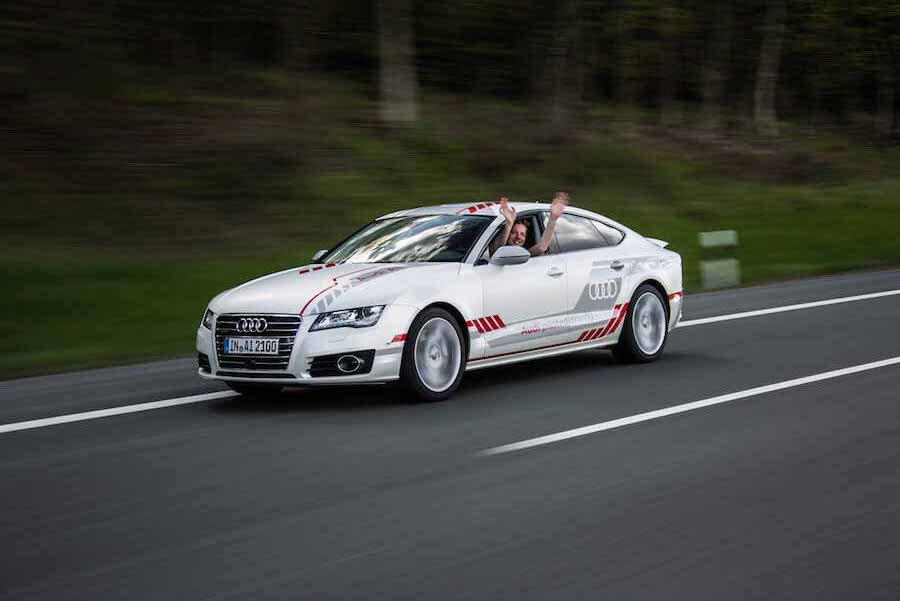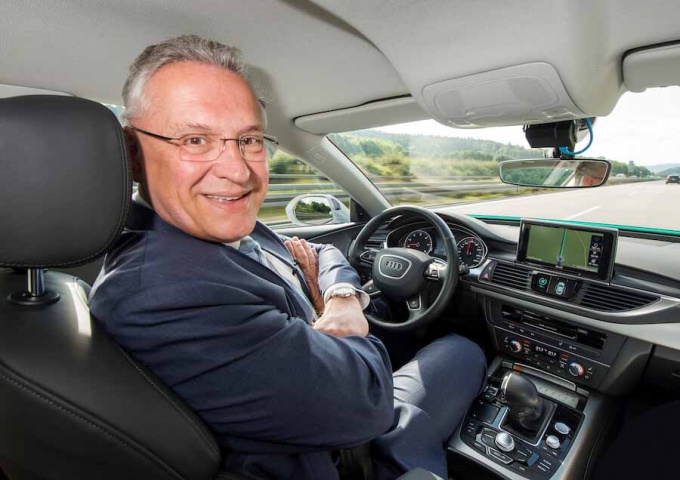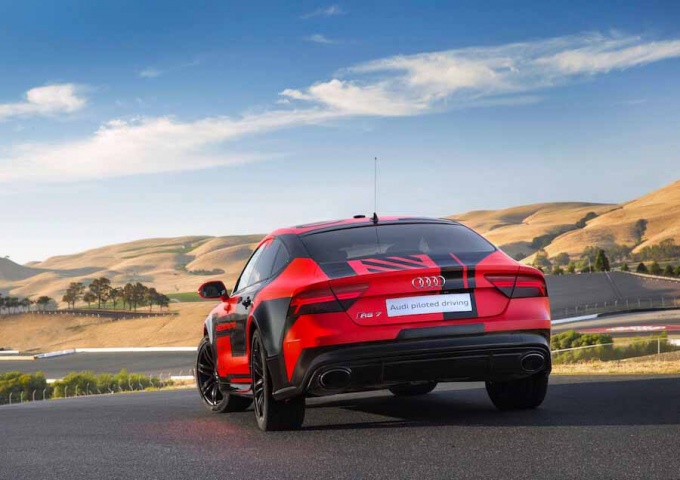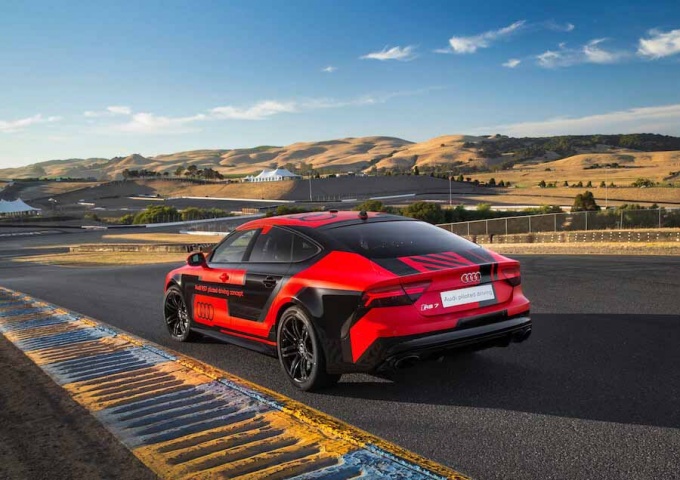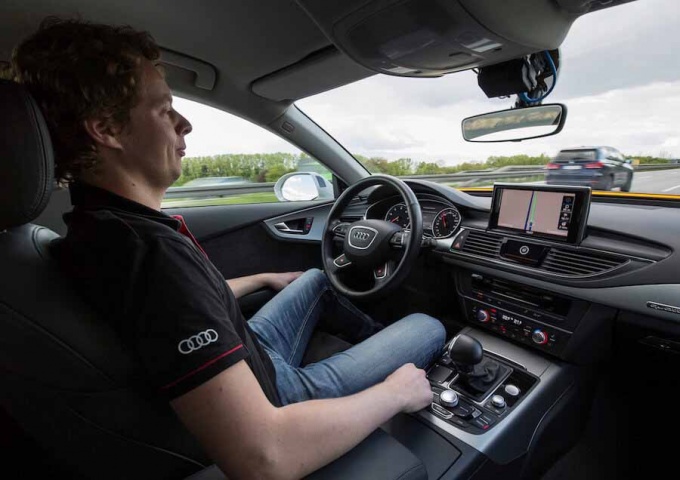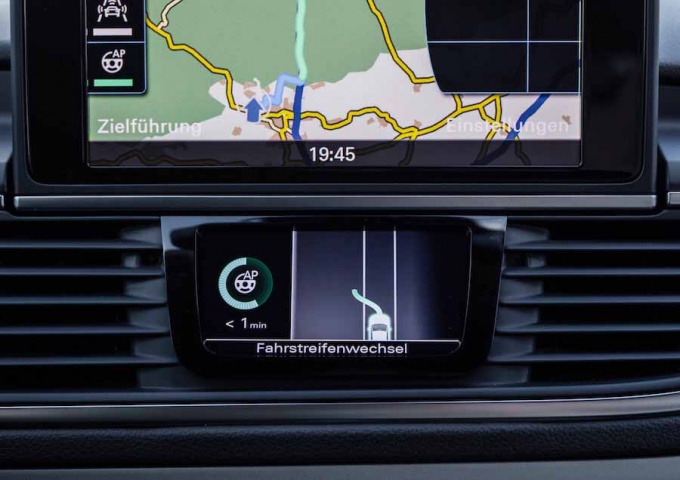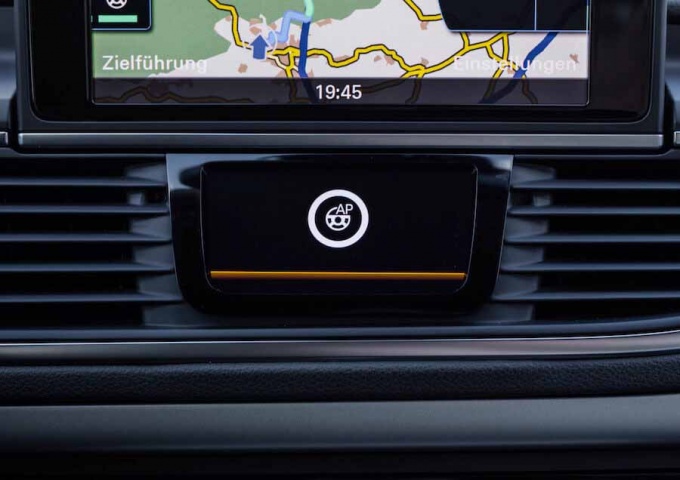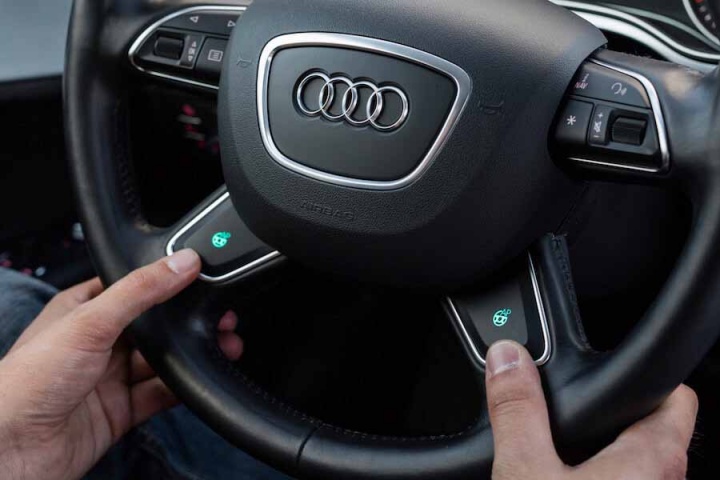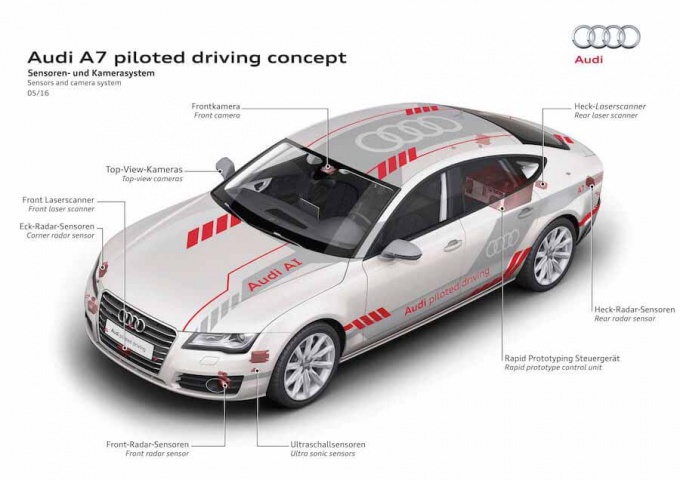How soon do you reckon driverless cars will dominate the road? It's further away...
In 2015, we experienced Audi's 'Piloted Driving' at its most exciting in the form of 'Bobby', an RS 7 Sportback modified to learn a race track and then lap it at unnervingly fast pace. On its own. The Volkswagen Group has been researching and developing autonomous drive technology for well over a decade, but never before had it grabbed headlines like that.
A lot has happened since then, and today we are in Neuburg, the home of Audi Sport, to get an update on the company's process and thoughts on a driverless future. The short presentation before hand was something that all those that think driverless cars are around the corner should be made sit through...
The salient points include a reminder of the different levels of autonomy, as defined by the Society of Automotive Engineers (SAE):
0: no automation: the full-time performance by the human driver of all aspects of the dynamic driving task, even when enhanced by warning or intervention systems.
1: driver assistance: the driving mode-specific execution by a driver assistance system of either steering or acceleration/deceleration using information about the driving environment and with the expectation that the human driver perform all remaining aspects of the dynamic driving task.
2: partial automation: the driving mode-specific execution by one or more driver assistance systems of both steering and acceleration/deceleration using information about the driving environment and with the expectation that the human driver perform all remaining aspects of the dynamic driving task.
For those first three levels, a human driver is responsible for monitoring the driving environment.
3: conditional automation: the driving mode-specific performance by an automated driving system of all aspects of the dynamic driving task with the expectation that the human driver will respond appropriately to a request to intervene.
4: high automation: the driving mode-specific performance by an automated driving system of all aspects of the dynamic driving task, even if a human driver does not respond appropriately to a request to intervene.
5: full automation: the full-time performance by an automated driving system of all aspects of the dynamic driving task under all roadway and environmental conditions that can be managed by a human driver.
Tesla? It's at level 2, despite all the hype. As are plenty of other car makers, including BMW, Volvo and Kia. Audi reckons it will be the first to launch level 3 when it debuts the new A8 saloon later this year (2017) and Audi's experts in the field believe it will be decades before level 4 is a reality and it won't even hazard a guess at level 5. Keep that in mind when reading all the hype from CES, etc.
Later in the day Jack took us for a ride on the autobahn. Jack is an Audi A7 Sportback that can drive itself along the motorway, maintaining the speed limit, overtaking cars itself, allowing merging and even recognising the intentions of other drivers. It's mighty impressive and appears ready for widespread use. We particularly like the driver interface. You need to press two buttons at once to turn on piloted driving, the steering wheel moves away from you (though you can take control of it at any time) and a blue band of light glows under the windscreen. There's an extra display under the main MMI screen to show what the car is planning next too. All very polished for a system that is seemingly years away from production.
Robby also took us for a ride. He's the next generation of Bobby, with 400kg less weight to carry around (making it 80kg lighter than a standard RS 7) and an extremely loud Akrpovic exhaust thrown in for good measure. It's quite an experience watching a car drive flat out around a track on its own, clipping apexes, squirming under heavy braking and pushing its tyres hard through long sweeping corners. Audi's engineers admit that this track project was huge fun, but it also helped develop certain aspects of its software that can be applied to the real world piloted driving project, dealing with unexpected and extreme situations. Robby quickly learns a circuit, but can then adapt to changing conditions too, such as a rain shower or overheating tyres.
Audi has now finished development of that car, but it seems that Robby gets a 'second life' as he will be handed over to the chassis and tyre test team for autonomous, repeatable component testing in a closed and controlled environment. Genius.
How soon do you reckon driverless cars will dominate the road? It's further away...

